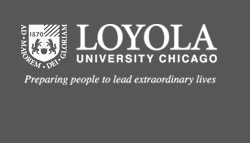Date of Award
1-20-2025
Degree Type
Dissertation
Degree Name
Doctor of Philosophy (PhD)
Department
Chemistry
First Advisor
Paul Chiarelli
Abstract
Plastic pollution is ubiquitous. As of 2021, global plastic production was estimated to be 390 million metric tons and of the total plastic waste generated so far, only about 9% has been recycled. Plastic pollution may cause ecological damage in aquatic and terrestrial environments in several ways. Plastic particles can adsorb different compounds and transfer them to animals and then to humans farther up the food chain. Plastic debris in aquatic ecosystems may also transform water pollutants into different, potentially more toxic compounds. My research is concerned with how different types of plastics affect the photolysis of emerging contaminants in freshwater environments. Photolysis studies of triclosan (TCS, 5-chloro-2-(2,4-dichlorophenoxy)phenol and methyl triclosan (2,4,4’-trichloro-2’-methoxydiphenyl ether) have shown that this compound undergoes photolysis twenty to twenty-five times faster when adsorbed on polyethylene (PE) in aqueous solutions than in aqueous solutions alone. TCS is known to undergo photolysis in surface waters to 2,8-DCDD. We are using the light induced unimolecular transformation of TCS to 2,8-dichlorodibenzodioxin (2,8-DCDD) as a probe of the ability of different types of plastics to catalyze the photolysis process. We have found that plastics composed of primarily aliphatic polymers will accelerate the conversion of TCS to 2,8-DCDD while the rate of photolysis of TCS adsorbed onto aromatic polymers (polystyrene and polycarbonate) is much slower. Fluorescence studies of TCS adsorbed onto different plastics suggest that the transfer of adsorbed energy from TCS to the aromatic polymers competes with the fragmentation process, thus slowing the overall rate of photolysis. The surface area of the plastic is also an important factor affecting the rate of photolysis as the rate of photolysis of TCS is found to increase with increasing surface area. Photolysis studies of the flame retardants tetrabromobisphenol A (TBBPA) and tetrachlorobisphenol A (TCBPA) are consistent with the TCS studies as well.
Recommended Citation
Martinez, Xiolmara, "Plastic Mediated Photolysis of Emerging Contaminants in Aqueous Solutions" (2025). Dissertations. 4149.
https://ecommons.luc.edu/luc_diss/4149


